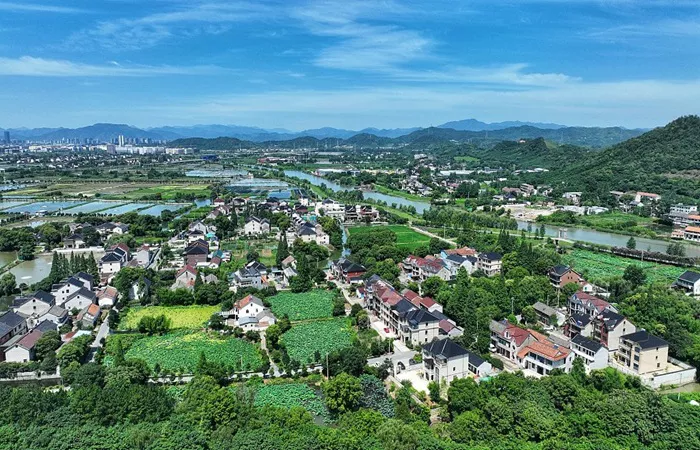CCTV- With 748 million permanent residents across more than 1,800 counties in China, county-level hospitals serve as the frontline of accessible healthcare for over half the nation’s population. The National Health Commission recently released its 2024 evaluation of county hospital capabilities, showing:
1,309 out of 2,059 evaluated county hospitals (63.57%) now meet third-class hospital standards.
93.35% have achieved second-class hospital capabilities.
Over 98% master standardized diagnosis and treatment for common diseases in respiratory, digestive, cardiovascular, and pediatric departments.
More than 90% serve as leaders of county-level medical consortiums.
Jinzhai’s Medical Consortium Revolution: Bringing Care Home
In Jinzhai County, Anhui—one of China’s first medical consortium reform pilots—residents previously faced daunting journeys to urban hospitals. “One-third of patients sought care outside the county, draining local health insurance funds,” recalled Wu Jie, Deputy Director of Jinzhai Health Commission.
Transforming a First-Class Clinic into a Lifeline
The Yanzihe Town Central Health Center, once unable to perform basic surgeries, now runs a bustling dialysis center. Hu Detian, a 64-year-old renal failure patient, spent 17 years traveling to Lu’an City for treatment, enduring high costs and living in a garage. “Rent was 300 yuan monthly for a shabby garage—any shelter was enough,” he said.
After Jinzhai joined the 2019 tight-knit county medical consortium pilot, 23 township hospitals were reorganized into 2 medical hubs and 7 sub-centers. County hospital experts were dispatched to sub-centers, like the team of 3 associate chief physicians and 1 head nurse at Yanzihe.
Result: County hospital outpatient/inpatient visits dropped 10%, while grassroots clinics saw a 20% increase in consultations.
Smart Management: Saving Lives and Funds
Jinzhai innovated health insurance by using surplus health insurance funds to invite specialists, keeping both patients and funds local. For Song Zuxue’s esophageal cancer surgery (costing 33,108 yuan), health insurance covered 21,734 yuan, a 15% tumor subsidy added 4,168 yuan, and the hospital bore the 4,000 yuan specialist fee—leaving Song with only 7,206 yuan to pay.
Over four years, Jinzhai invited 3,585 specialists, turning an 80 million yuan health insurance deficit into a 33.16 million yuan surplus.
Emergency Response: Rethinking Rural First Aid
In Renshou County, Sichuan, a 71-year-old stroke patient from 20 km away reached the county hospital in time thanks to a streamlined emergency network. “Grassroots doctors notify us immediately, and green channels are prepped,” said Tan Xiaolin, Deputy Director of Renshou People’s Hospital. The patient completed checks and was admitted within 20 minutes.
Renshou invested 196 million yuan to build “Five Major Emergency Centers” for chest pain, stroke, trauma, maternal and child critical care. Heart attack mortality dropped from 10% to 3.1%.
Paradox of Rising Facilities, Falling Consultations
Despite 17.9% growth in grassroots medical institutions since 2009 (882,000 to 1.04 million), their consultation share fell from 61.8% to 51.7%. Experts cite:
- Talent shortages and outdated equipment.
- Limited outpatient reimbursement under health insurance.
“With 140 million diabetics and 250 million hypertensives, most don’t need big hospitals,” said Prof. Liu Yuanli of Peking Union Medical College. A 13-department guideline in April aims to strengthen grassroots hardware and software.
Shenzhen’s TCM Innovation: Bringing Expertise to Communities
Shenzhen’s 21 grassroots medical groups exemplify urban healthcare sinking. In Dongtang Community, Bao’an District, specialists from Shenzhen Hospital of Integrated Traditional Chinese and Western Medicine rotate at the local health center. Residents bind community institutions enjoy 75% health insurance coverage for class-A drugs/procedures.
The center’s “TCM Pavilion” offers 6 categories of therapies like acupuncture and tuina. Night clinics (open till 9 PM) in nearly 700 Shenzhen health centers cater to working families, with over 10 TCM techniques available across 37 affiliated facilities.
As county hospitals and community clinics evolve, they increasingly bridge the urban-rural healthcare divide, proving that accessible, affordable medicine is key to national well-being.
Related topics:

